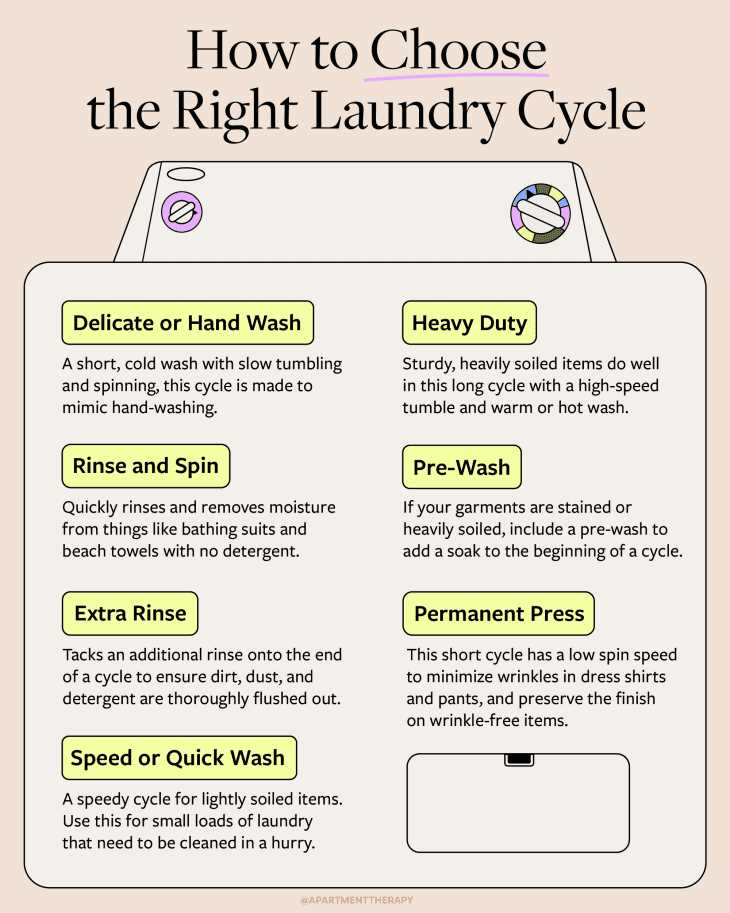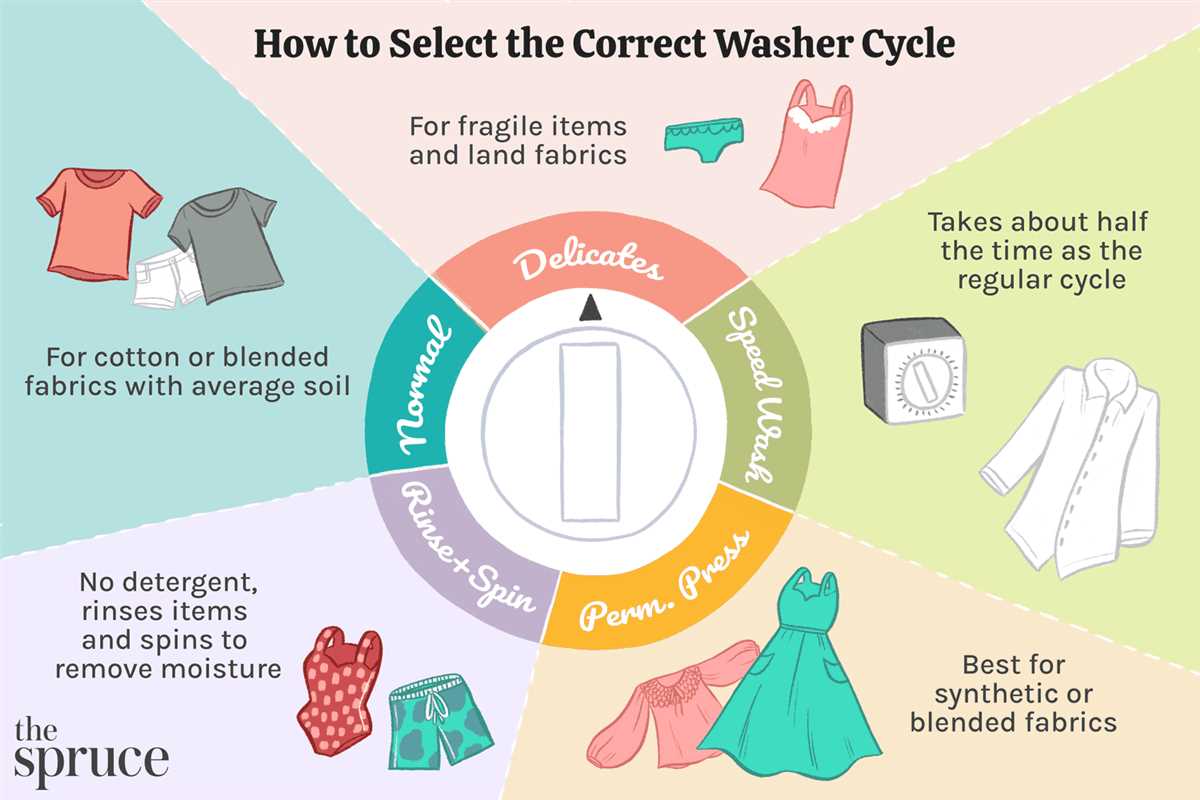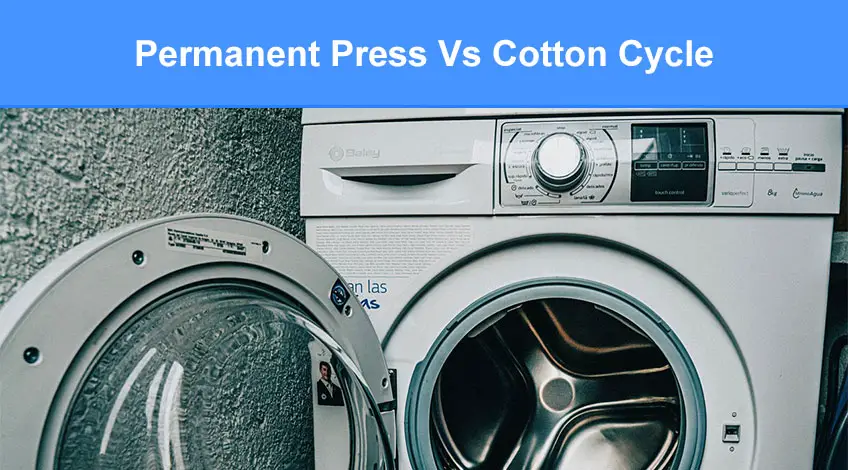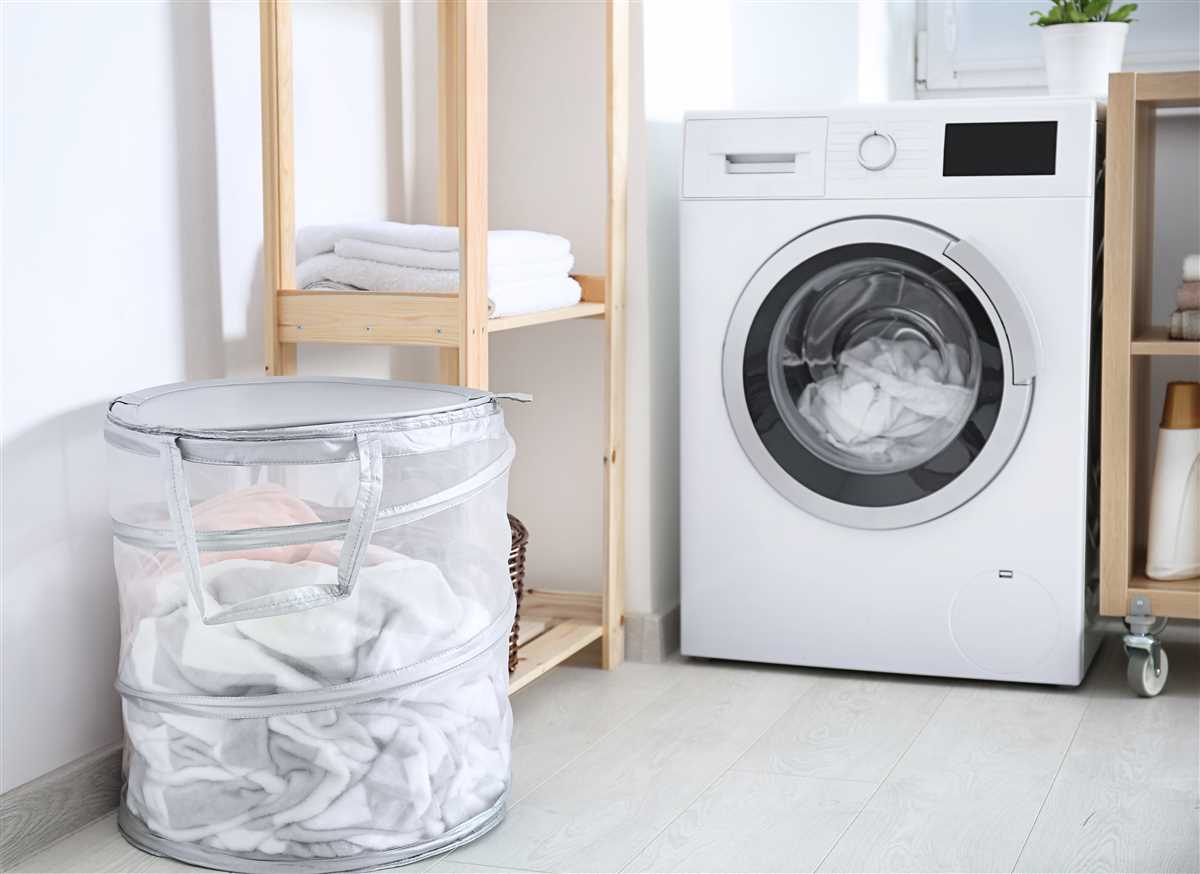




When it comes to doing laundry, understanding the different cycles on your washing machine can make a big difference in how your clothes are cleaned. Two of the most commonly used cycles are the permanent press and cotton cycles. While they may seem similar, there are key differences between them that can have an impact on the longevity and appearance of your garments.
The permanent press cycle is specifically designed for synthetic fabrics, such as polyester and nylon, which are prone to wrinkling. This cycle uses a combination of gentle agitation and cool water to minimize wrinkles and prevent them from setting in. It also includes a cool-down period at the end of the cycle to further reduce the chances of wrinkling. The permanent press cycle is great for everyday clothing items like shirts, pants, and dresses, as well as linens, towels, and other household fabrics.
On the other hand, the cotton cycle is best suited for natural fibers like cotton, linen, and hemp. This cycle uses hotter water and more vigorous agitation to remove dirt, stains, and debris from your clothes. It is particularly effective for heavily soiled items, such as jeans, work clothes, and baby clothes. The cotton cycle also typically includes a longer spinning time to remove excess water, resulting in faster drying times. However, be careful not to use this cycle on delicate fabrics or garments that are labeled as dry clean only, as it can cause damage.
Understanding the differences between the permanent press and cotton cycles can help you choose the right cycle for different types of clothing and fabrics. By selecting the appropriate cycle for each load of laundry, you can ensure that your clothes are cleaned effectively and maintain their quality and appearance for longer. Remember to always follow the care instructions on your clothing labels and make adjustments as needed based on your washing machine’s settings.
Permanent Press vs. Cotton Cycle
When it comes to doing laundry, understanding the different cycle options on your washing machine can help you achieve the best results. Two commonly used cycles are the permanent press cycle and the cotton cycle. While both cycles have their uses, they have distinct differences that make them suitable for different types of fabrics and laundry needs.
Permanent Press Cycle
The permanent press cycle is designed to minimize wrinkles in your laundry and is ideal for synthetic or blended fabrics. This cycle typically consists of a series of gentle wash and rinse actions followed by a high-speed spin cycle to remove excess water. It uses lower water temperatures and shorter wash and rinse times compared to other cycles.
When selecting the permanent press cycle, it is important to consider the garments you are washing. This cycle is suitable for clothing items like polyester, nylon, rayon, and other delicate fabrics that may wrinkle easily. It helps to maintain the shape and appearance of these fabrics, leaving them looking fresher and with fewer wrinkles.
Cotton Cycle
The cotton cycle, on the other hand, is specifically designed for washing cotton fabrics, which are more durable and can withstand higher heat and longer wash times. This cycle typically uses hotter water temperatures and longer wash and rinse times to effectively clean and remove stains from cotton garments.
If you have items made of 100% cotton or cotton blends, such as t-shirts, jeans, towels, or bed linens, the cotton cycle is the best choice. The longer wash time and higher temperatures help to break down and remove dirt and oils from cotton fibers, resulting in a thorough and effective cleaning.
Conclusion
Understanding the differences between the permanent press cycle and the cotton cycle can help you make the right choice for your laundry. For delicate, wrinkle-prone fabrics, the permanent press cycle is ideal, while the cotton cycle is better suited for durable cotton fabrics that may require a deeper cleaning. Be sure to check garment labels for care instructions to determine the best cycle for each item of clothing.
The Key Differences
- Wash Time: The Permanent Press cycle typically takes longer than the Cotton cycle. This is because the Permanent Press cycle includes a gentle agitation and cool-down period to help prevent wrinkles, while the Cotton cycle uses higher temperatures for a quicker wash.
- Temperature: The Permanent Press cycle uses cooler water temperatures compared to the Cotton cycle. This is because cooler water helps to minimize creases and prevent shrinkage, while higher temperatures can be used for cotton fabrics without causing damage.
- Agitation: The Permanent Press cycle uses a gentler agitation compared to the Cotton cycle. This is to prevent excessive wrinkling in delicate fabrics, while the Cotton cycle can use a more vigorous agitation to help remove stains and dirt from cotton fabrics.
- Spin Cycle: The Permanent Press cycle usually has a shorter or gentler spin cycle compared to the Cotton cycle. This is to minimize wrinkling and reduce the chance of damage to delicate fabrics, while the Cotton cycle may have a longer and more intense spin cycle to help remove excess water from cotton fabrics.
- Wrinkle Prevention: The Permanent Press cycle is designed to reduce wrinkles in clothing through the use of cooler water, gentler agitation, and a cool-down period. The Cotton cycle focuses more on cleaning and may not have as strong of a wrinkle prevention feature.
- Fabric Types: The Permanent Press cycle is typically recommended for synthetic fabrics, delicates, and clothing prone to wrinkles, while the Cotton cycle is ideal for cotton and other durable fabrics that can withstand higher temperatures and more vigorous agitation.
It is important to check the care labels on your clothing to determine the appropriate cycle to use. Always follow the manufacturer’s instructions for best results and to avoid damaging your garments.
Choosing the Right Cycle for Your Clothes
When it comes to doing laundry, choosing the right cycle for your clothes is important to ensure they are cleaned effectively and maintained in good condition. Different fabrics and clothing items require different washing cycles to prevent damage and keep them looking their best. Here are some tips to help you choose the right cycle for your clothes:
Read the Care Label

Before starting your laundry, always take a moment to read the care label on your clothes. The care label provides important information about the fabric and instructions for washing. It will usually recommend a specific washing cycle or temperature for the garment. Following these instructions will help prolong the life of your clothes and prevent any damage.
Consider the Fabric

Different fabrics require different washing cycles. Delicate fabrics such as silk or lace may require a gentle cycle to prevent stretching or tearing. On the other hand, sturdy fabrics like denim or cotton can withstand a more vigorous cycle. Understanding the fabric of your clothes will help you choose the appropriate cycle to maintain their quality.
Sort Your Laundry
Sorting your laundry before washing is crucial in ensuring that each clothing item receives the appropriate treatment. Sort your clothes based on color, fabric, and level of dirtiness. This will help prevent color bleeding, damage, and ensure your clothes are thoroughly cleaned. Sorting your laundry also allows you to select the suitable cycle for each load.
Select the Right Cycle
Most washing machines offer a variety of cycles to choose from. Here are some common cycles and their purposes:
- Normal or Regular cycle: Suitable for everyday clothing items. This cycle provides a combination of agitation, soaking, and rinsing to effectively clean clothes.
- Gentle cycle: Ideal for delicate fabrics. This cycle uses gentle agitation and slower spinning speed to prevent damage to fragile items.
- Permanent Press cycle: Designed for wrinkle-resistant fabrics. This cycle uses medium agitation and a cool-down period to prevent wrinkles.
- Cotton cycle: Best for heavy fabrics like towels and jeans. This cycle uses high agitation and longer washing time to thoroughly clean and remove tough stains.
Keep in mind that each washing machine may have slightly different cycle options, so it’s important to refer to the user manual for specific details.
Adjust the Temperature

In addition to selecting the right cycle, consider the temperature for your wash. Using hot water can help remove stains and kill germs, but it may not be suitable for all fabrics. Cold water is gentler on clothes and recommended for delicate fabrics or items that may shrink. Warm water is a good compromise for most everyday clothing items.
By taking these tips into consideration, you can choose the right cycle for your clothes, ensure effective cleaning, and extend the lifespan of your garments.
Expert Tips for Laundry Care
Keep Clothes Looking New
- Separate laundry by color: Always wash dark-colored clothes separately from light-colored ones to prevent color bleeding.
- Zip up zippers: Before putting clothes in the washing machine, make sure to zip up zippers to avoid snagging or damaging other garments.
- Pre-treat stains: Treat stains with a suitable stain remover before washing to increase the likelihood of complete stain removal.
- Turn clothes inside out: Turning clothes inside out before washing helps prevent fading and keeps prints intact.
- Use a laundry bag for delicates: To protect delicate fabrics and prevent damage, place them in a laundry bag before washing.
Choosing the Right Washing Machine Setting
- Read garment care labels: Always check the labels on clothing items for recommended washing instructions.
- Use appropriate water temperature: Select the appropriate water temperature for the specific fabric and level of dirtiness. Cold water is often sufficient and helps conserve energy.
- Consider the cycle: Permanent press cycles are suitable for most everyday clothing items, while cotton cycles are better for heavier fabrics like towels or bedding.
- Don’t overload the machine: Overloading the washing machine can result in poor cleaning and excessive wear on clothing.
Drying and Ironing

- Use proper dryer settings: Adjust the dryer settings according to the fabric type. Avoid high heat settings for delicate items.
- Hang or lay flat to dry: Air drying is often gentler on clothing and helps prevent shrinking. Hang or lay flat to dry whenever possible.
- Iron with care: Use the appropriate heat setting for the fabric and iron clothes inside-out to avoid direct contact with the iron.
- Store clothes properly: Fold clothes neatly or hang them up to prevent wrinkles and maintain their shape.
Caring for Special Fabrics

- Follow instructions for delicate fabrics: Silk, wool, and other delicate fabrics may require special care. Always follow the specific instructions provided for these garments.
- Avoid fabric softeners with workout clothes: Fabric softeners can reduce the breathability and moisture-wicking properties of workout clothes.
By following these expert tips, you can ensure proper care for your clothes, prolong their lifespan, and keep them looking new and fresh. Remember to always read and follow the specific care instructions for each garment to achieve the best results.
Extending the Life of Your Clothes
1. Wash Clothes Correctly
Properly washing your clothes can help extend their lifespan. Always read the care instructions on the garment label before washing. Some clothes may require gentle cycles or handwashing instead of machine washing. Using the appropriate water temperature and laundry detergent can also make a difference.
2. Sort Your Laundry
Sort your laundry by color and fabric type before washing. This prevents colors from bleeding onto other garments and helps avoid damage to delicate fabrics. Washing light and dark-colored clothes separately can also help maintain their original color.
3. Use Gentle Detergents

Choose a gentle detergent that is suitable for your clothes. Harsh detergents can cause color fading and damage the fabric fibers. Look for detergents specifically designed for delicate fabrics or those labeled as “gentle” or “fragrance-free”.
4. Avoid Overloading the Washing Machine

Overloading the washing machine can lead to poor cleaning and increased wear and tear on your clothes. Follow the manufacturer’s guidelines for load capacity and avoid stuffing too many items into the machine.
5. Turn Clothes Inside Out
Turning your clothes inside out before washing can help protect the outer surface and prevent excessive friction and fading. This is especially important for dark-colored clothes, which are more prone to fading.
6. Air Dry Whenever Possible

Avoid exposing your clothes to high heat by air-drying them whenever possible. Heat can cause shrinkage, color fading, and damage to the fabric. Hang items on a clothesline or drying rack to preserve their shape and condition.
7. Store Clothes Properly
Take care when storing your clothes to avoid wrinkles, creases, and damage. Fold items neatly and store them in a cool, dry place away from direct sunlight. Consider using garment bags or storage containers to protect clothes from dust, moths, and other potential hazards.
8. Mend and Repair
If you notice small tears, loose buttons, or loose seams, it’s important to mend and repair them promptly. This can prevent further damage and extend the life of your clothes. Keep a sewing kit on hand or visit a tailor for more complex repairs.
FAQ
What is the difference between Permanent Press and Cotton Cycle?
Permanent Press and Cotton Cycle are two different settings on a washing machine. The Permanent Press cycle is designed for synthetic fabrics like polyester, nylon, and acrylic, while the Cotton Cycle is meant for natural fibers like cotton, linen, and hemp.
Can I use the Permanent Press cycle for cotton clothes?
Yes, you can use the Permanent Press cycle for cotton clothes, but it’s not the most optimal choice. The Cotton Cycle is specifically designed for cotton fabrics and will provide better results in terms of cleaning and care for your cotton clothes.
What kind of clothes should I wash on the Permanent Press cycle?
The Permanent Press cycle is ideal for synthetic fabrics, such as polyester, nylon, and acrylic. These fabrics are more prone to wrinkling, and the Permanent Press cycle helps to reduce wrinkles and maintain the shape of the garments.
Is the Permanent Press cycle suitable for delicate fabrics?
No, the Permanent Press cycle is not suitable for delicate fabrics. Delicate fabrics require gentle care, and the Permanent Press cycle may be too harsh for them. It’s best to use a delicate or hand wash cycle for delicate fabrics to prevent damage.
What is the difference between the permanent press and cotton cycle?
The main difference between the permanent press and cotton cycle is the temperature and agitation level. The permanent press cycle uses a lower temperature and less agitation, making it suitable for synthetic and delicate fabrics. The cotton cycle, on the other hand, uses a higher temperature and more agitation for heavy-duty fabrics like cotton.
Can I use the permanent press cycle for all types of fabrics?
The permanent press cycle is specifically designed for synthetic and delicate fabrics that are prone to wrinkling. It uses a lower temperature and less agitation to prevent damage to these fabrics. While it can be used for some other types of fabrics, it may not provide the same level of cleaning and care as a cycle specifically designed for those fabrics.










